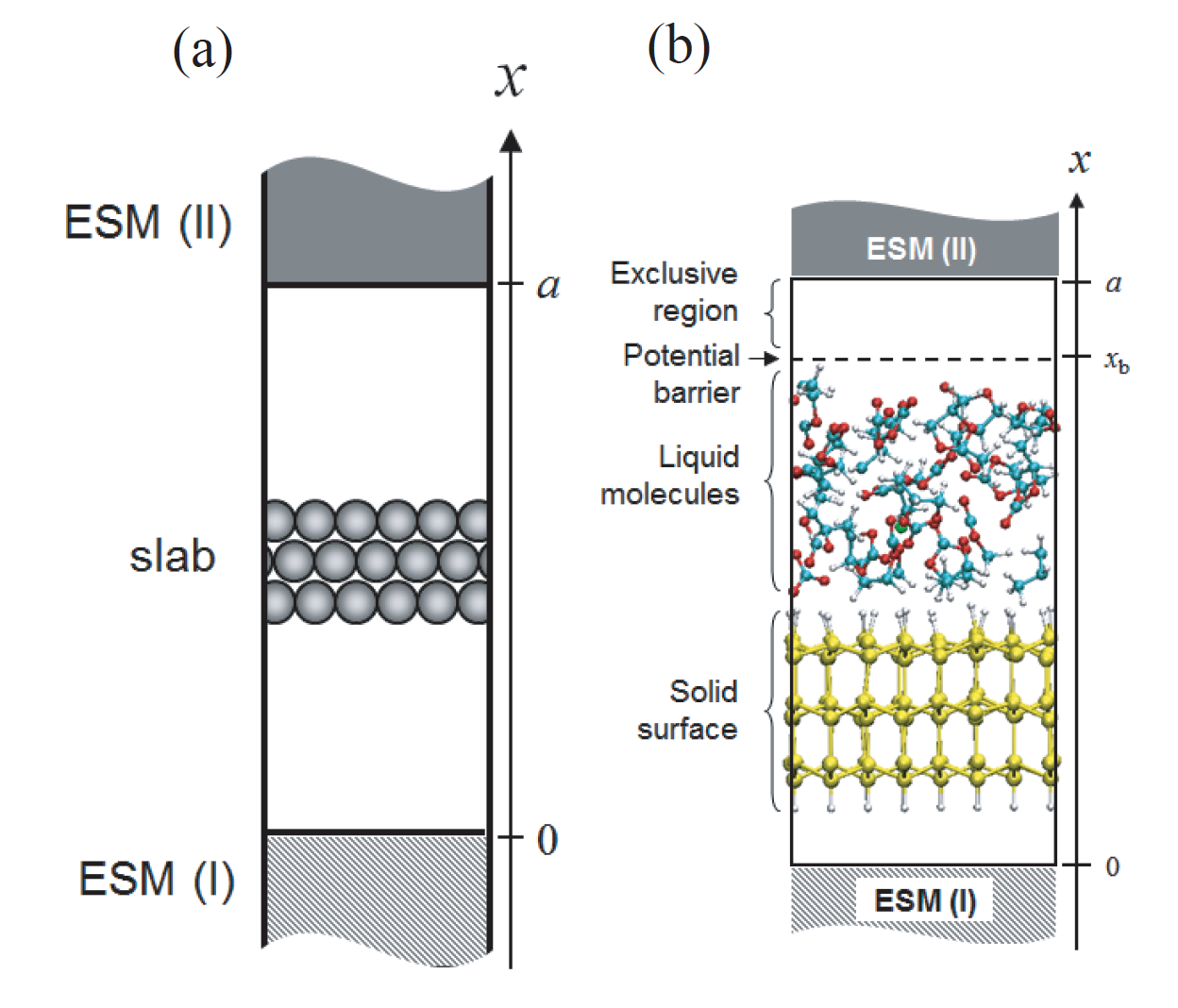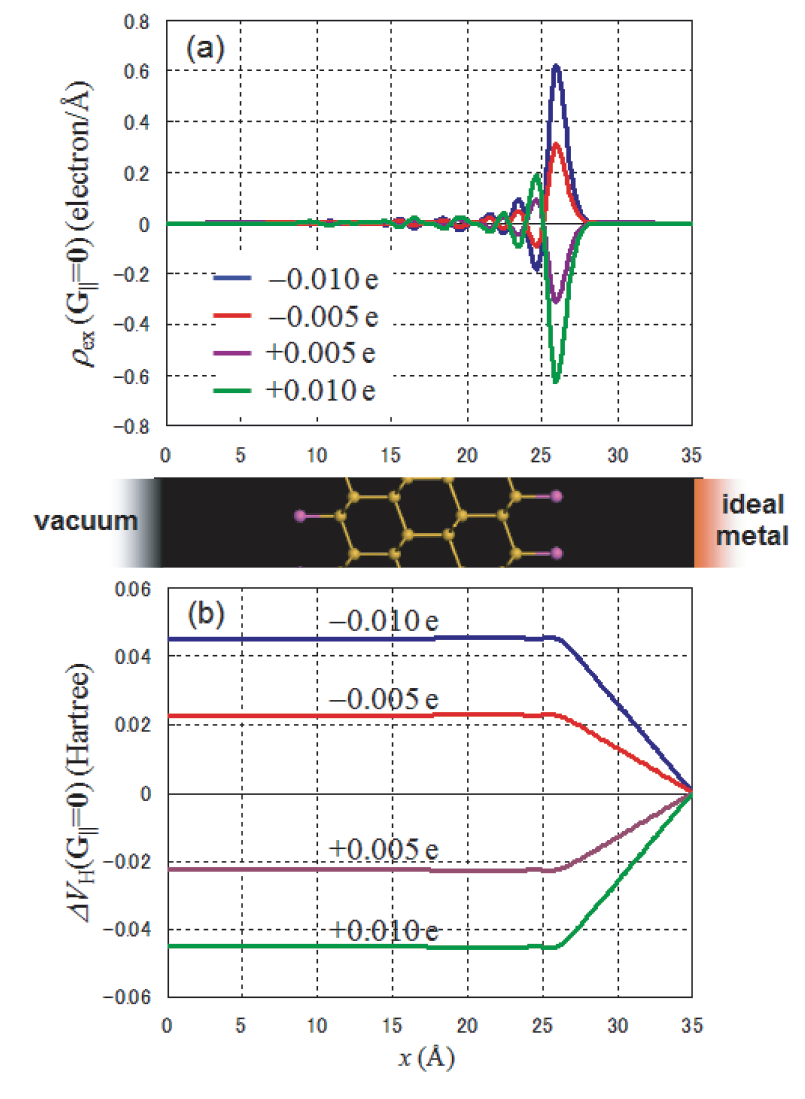Next: Example of test calculation Up: Effective screening medium method Previous: Effective screening medium method Contents Index
The effective screening medium (ESM) method is a first-principles computational method for charged or biased systems consisting of a slab [86,87,88,89]. In this method, a 2-dimensional periodic and 1-dimensional optional boundary conditions are imposed on a model cell (Fig. 44(a)), and the Poisson's equation is solved under those set of boundary conditions by using the Green's function method. An isolated slab, charged slab, and a slab under an uniform electric field can be treated by introducing the following combinations of semi-infinite media (ESMs).
 |
A calculation based on an ESM-method can be performed by the following keyword:
ESM.switch on3 # off, on1=v|v|v, on2=m|v|m, on3=v|v|m, on4=on2+EF ESM.buffer.range 4.5 # default=10.0 (ang),where on1, on2, on3, and on4 represent combinations of ESMs, 'vacuum + vacuum', 'ideal metal + ideal metal', 'vacuum + ideal metal', and 'ideal metal + ideal metal under an electric field', respectively. The keyword 'ESM.buffer.range' indicates the width of a exclusive region for atoms with ESM (unit is Å), which is necessary in order to prevent overlaps between wave functions and ESM.
Both ESM (I) and (II) are semi-infinite vacuum media. In this case, note that the total charge of a calculation system should be neutral. The keyword 'scf.system.charge' should be set to be zero.
Both ESM (I) and (II) are semi-infinite ideal-metal media. One can deal with charged systems. The keyword 'scf.system.charge' can be set to be a finite value.
ESM (I) and (II) are a semi-infinite vacuum and ideal metal medium, respectively. One can deal with charged systems. The keyword 'scf.system.charge' can be set to be a finite value.
An electric field is imposed on the system with the same combination of ESMs to 'on2'. By using the following keyword, one can impose a uniform electric field on a calculation system;
ESM.potential.diff 1.0 # default=0.0 (eV),where one inputs a potential difference between two semi-infinite ideal-metal media with reference to the bottom ideal metal (unit is eV). The electric filed is decided by the length of the cell, a, and the potential difference.
One can implement MD calculations of solid surface-liquid interface systems with any combinations of ESMs. A surface-model slab and a liquid region should be located as shown in Fig. 44(b). In order to restrict liquid molecules within a given region, an cubic barrier potential can be introduced by using the following keyword (see Fig. 44(b)):
ESM.wall.position 6.0 # default=10.0 (ang) ESM.wall.height 100.0 # default=100.0 (eV),where 'ESM.wall.position' denotes the distance between the upper edge of the cell and the origin of the barrier potential,
 |
2016-04-03